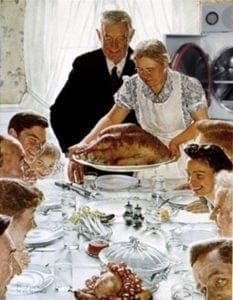If You Ran Your Kitchen Like a Typical Lab
By: Priorclave North America
Category: Uncategorized

The November air has a crisp bite to it and smells like snow. Inside, the house is cozy and warm as Ed and Edna get ready for family to arrive for the big holiday meal. The floors are vacuumed and the centerpiece set out. Everything is almost ready.
Ed leans out from the kitchen and sees Edna rearranging photographs on the piano. “Honey, why did you turn the oven off? You know, if you just left it running all the time, you’d never have to pre-heat!”
Edna shook her head and sighed. “Yes, dear.” She’s heard it all before.
Later that evening, while Ed poured coffee for her mother, Edna turned on the oven to warm the pumpkin pie. Ed returned to the kitchen, looking for tea for his sister. He saw the pre-heat light on the oven and his brow furrowed with concern. He pulled the door open.
“Why did you close the oven door?” Ed asked his wife. “Please leave it open while it’s pre-heating.”
Edna rolled her eyes as her husband left the kitchen. There goes the electric bill again!
It may seem silly, but it’s true. If we applied research protocols in our homes—and many studies show the kitchen is the most pathogen-rich room in the house—we’d leave the oven hot and the door wide open all day long, just in case we needed to bake something. That\’s the story of today\’s medical-grade autoclave: hot and ready, all day long, even if you aren\’t planning to use it until 4 PM.
According to a recent study on energy efficiency in labs, research autoclaves are kept hot, and consuming cooling water, 8 to 24 hours a day, even though they are only used for 3 hours per day. What looks like efficiency—an autoclave that’s always ready for the next cycle—is a false economy. Any money saved by eliminating the pre-heat time is absolutely dwarfed in energy, water costs, and maintenance costs—especially with rising energy prices, and water shortages across North America.

